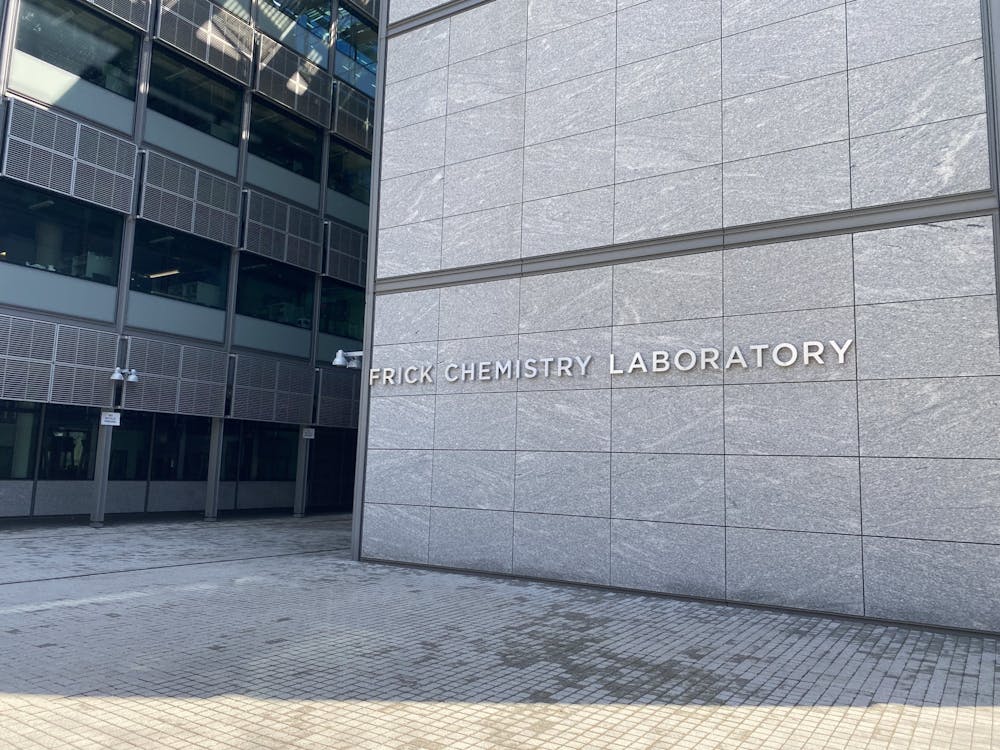Editor’s Note: A previous version of this article included quotes from chemistry professor Michael Hecht which were mistranscribed and have been corrected. The ‘Prince’ regrets these errors.
With the addition of two new residential colleges and the entrance of the largest undergraduate class in the University’s history, many introductory classes have exceeded their average enrollment numbers, prompting a variety of classroom and teaching changes. Faculty and students have expressed their concerns about the rise in the number of students in introductory classes and how this increase may look in the coming years.
In interviews with The Daily Princetonian, chemistry professor Michael Hecht and physics professor Daniel Marlow detailed how introductory chemistry and physics classes have seen a marked increase in enrollment since the pandemic and with the increase in the overall size of the Class of 2026.
PHY 103: General Physics I enrollment increased from 269 people in the fall 2021 semester to 347 people in 2022, an increase of about 29 percent. Similarly, enrollment for CHM 201: General Chemistry I has more than doubled since the fall of 2020, soaring from 183 people in the fall 2020 semester to 240 people in fall 2021 and topping 391 enrollments this year – an increase of about 63 percent from fall 2021 to fall 2022.
For some professors, this spike in enrollment has called into question the future nature of their introductory classes, such as PHY 103 and CHM 201.
“Personally, I am delighted to see so many students interested in taking physics,” Marlow said. “The basic structure of our classes has not been affected, although we do have several sections that are at capacity, which creates problems for students trying to join the course in the add/drop period.”
Hecht pointed to the shift in classroom teaching practices, as he had to move his class from the Frick Chemistry lab to McCosh Hall.
“My colleague, Robert L’Esperance [the Senior Director of General Chemistry Teaching Laboratories] and I are in a difficult situation because the lecture hall that was built about ten years ago in Frick Chemistry Lab is too small for use and the teaching labs are too few,” he said.

Hecht explained that the lecture hall in Frick is meant to accommodate up to 250 people.
“This semester’s increase is unprecedented,” he said. “We have relocated to McCosh 50 which is good as it is newly furnished, but we can’t do demonstrations because there is no lab. Now, like during [COVID-19], videos are being used as supplementary lecture material.”
As a result of increased enrollment, these courses have added additional instructors to keep up with student needs.
Hecht described how increased enrollment spurs the need for graduate students to participate in leading the introductory courses.

“Preceptors are historically second-year graduate students, but we had to ask third- and fourth-year graduate students to help teach in view of the influx of students,” he said. “With this, there also needs to be more evening labs which is not fair to teaching assistants and instructors who deserve to go home.”
Marlow said that PHY 103 was able to successfully handle the increased enrollment this year but will not be able to continue accommodating this type of over-enrollment in the future.
“We were able to handle the situation this year with some effort using our standard approach, but to accommodate further increases, we will need to have more instructors (faculty) and more classrooms,” Marlow said.
One student in CHM 201, Vincent Etherton ’26, expressed his own reservations about this situation, calling the adjustments “detached” at times.
“In my chemistry class, sometimes the video-demonstrations on the board can be really awkward. It is less engaging than usual chemistry classes and sometimes feels a little detached,” Etherton said.
Responding to an inquiry by the ‘Prince,’ Deputy University Spokesperson Michael Hotchkiss expressed confidence that adequate space in classes and residences exists for this school year and will be appropriately phased in over the next four years of transition.
“While construction on campus has reduced the number of available classrooms this semester, space remains sufficient both for this academic year and as the expansion of the undergraduate class continues over the next several years,” Hotchkiss wrote in an email.
Hotchkiss explained that many factors go into classroom assignments, including “historical enrollment data for courses, students’ expressed interests, enrollment trends by discipline, and room availability.”
“We make the best assignments we can given a complex set of needs. It’s not unusual for issues to arise that require adjustments to classrooms, and they are addressed through an established process,” he wrote.
In looking toward the long-term effects of this “unprecedented increase,” Hotchkiss said that the “Office of the Dean of the College will continue to work with the academic departments to identify critical course enrollment and teaching needs for the growing undergraduate population.”
Correction: A previous version of this article stated that CHM 201 enrollment increased by 21 percent. In reality, it increased by around 63 percent. The ‘Prince’ regrets this error.
Sandeep Mangat is an associate News editor who has reported on labor shortages on and off campus, University guidelines regarding the COVID-19 pandemic, and research led by Princeton faculty. He can be reached at smangat@princeton.edu and on Twitter @s_smangat.
Aidan Iacobucci is a staff news writer for the ‘Prince.’ He can be reached at iacobucci@princeton.edu or @aidaniaco on Instagram.








